
A big hello to all my friends who love collections. Before presenting this collection, I want to apologize for my absence over the last few days, which was truly justified.
Today, I am leaving my collection of Tarot decks with this wonderful community.
---
>Un saludo muy grande a todos las amigas y amigos de las colecciones. Antes de presentar esta colección quiero disculparme por la ausencia de los últimos días, de verdad que ha estado justificada.
>Hoy dejo en esta bonita comunidad mi colección de barajas del Tarot.
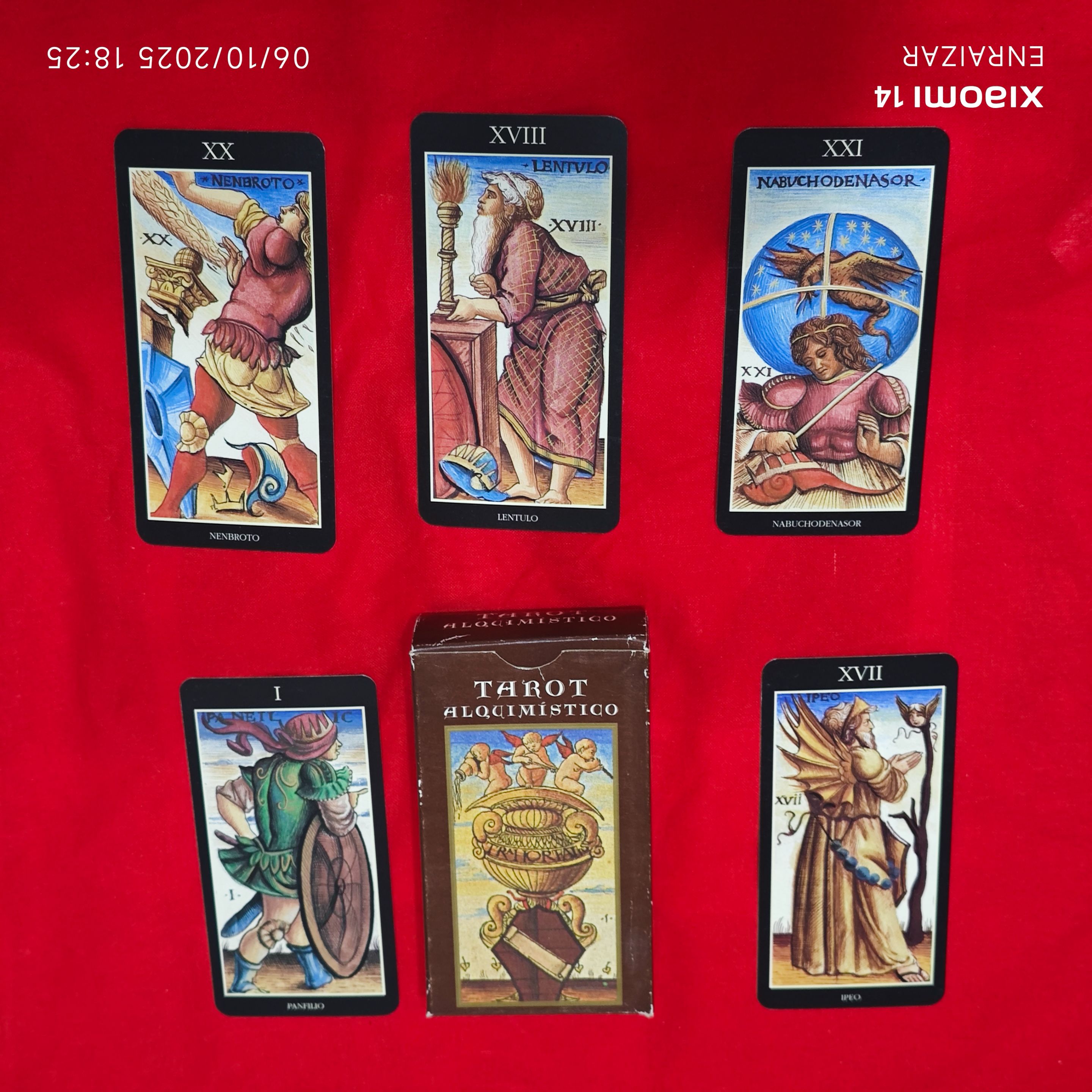
The origins of Tarot cards are unclear. The earliest references to the use of playing cards date back to the 14th century. In 1371, the poet Jaume March included the term naip in a dictionary he created. Somewhat later, in a decree issued by the priors of Florence (1375), a game called naibbe was identified as one of the bad habits to be combated. In 1377, the Provost of Paris banned card games on weekdays. So far, it seems that card games and playing cards have a few centuries of history. Furthermore, far from their divinatory use, it seems that cards served as entertainment.
---
>Las cartas del Tarot tienen un origen confuso. Las primeras menciones que tenemos del uso de naipes se remontan al siglo XIV. En 1371, el poeta Jaume March recoge el término naip en un diccionario de su creación. En una fecha algo posterior en un decreto de los priores de Florencia (1375) se identificaba a un juego llamado naibbe como parte de las malas costumbres a combatir. En 1377 el Preboste de París prohibió los juegos de cartas en los días laborables. Hasta aquí, parece ser que los juegos de cartas y los naipes tiene unos pocos siglos de historia. Además, lejos de su uso adivinatorio parece que las cartas sirvieron como entretenimineto.
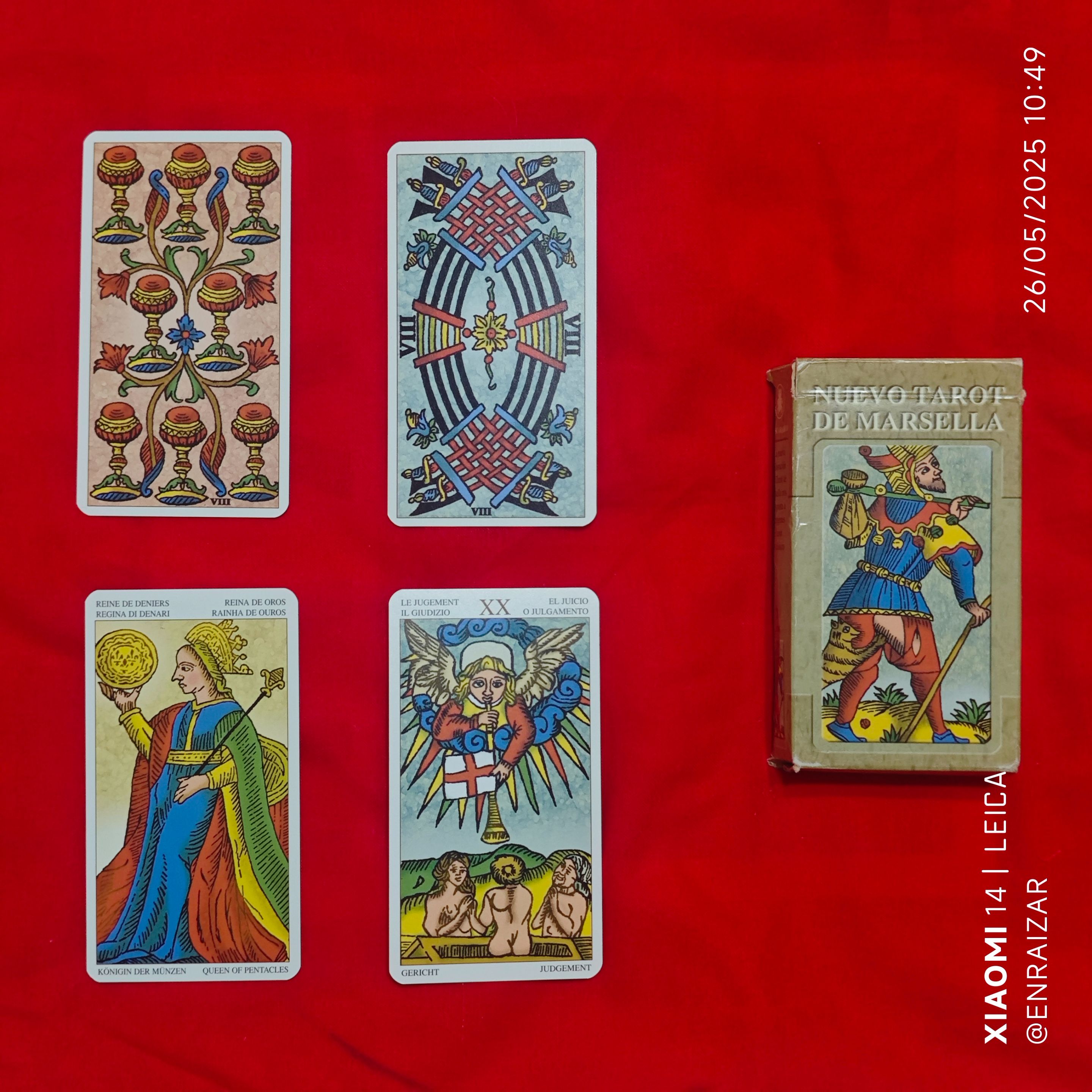
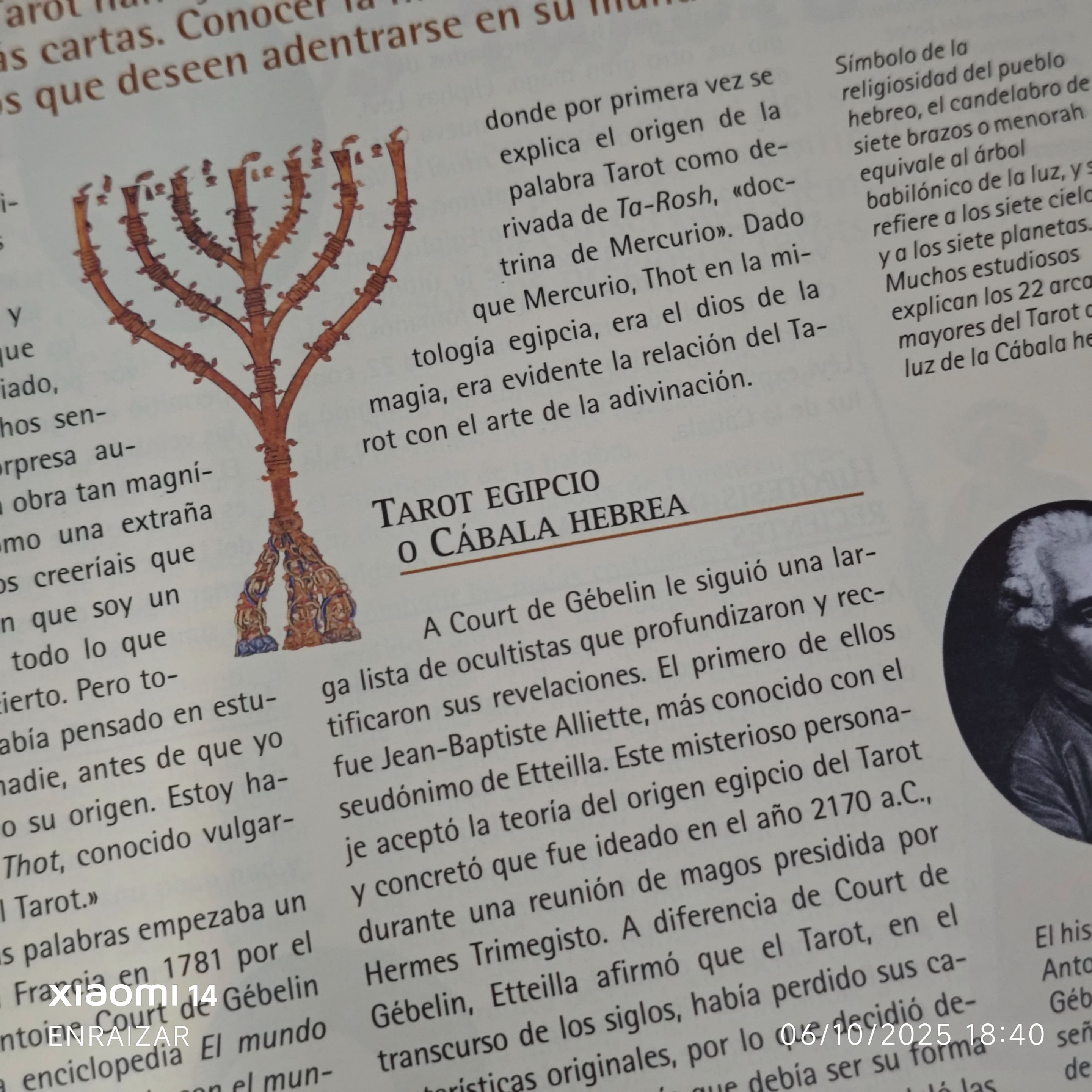
Source of information / fuente de nformación: El Arte del Tarot – 2-Volume Spanish Tarot Encyclopedia (RBA / Orbis Fabbri, 1990s)
Continuing with the story, 19th-century occultists traced the origins of the Tarot to ancient Egypt. The Tarot was said to conceal secret knowledge that only a select few initiates would be able to understand.
Regardless of the origin of Tarot cards, since the 15th century, some of the most beautiful decks ever made have been produced in Lombardy (Italy): playing cards drawn and painted by hand.
Since the 15th century, true works of art have been created in the world of Tarot. This artistic element alone is a good reason to enjoy these unique decks.
---
>Continuando con la historia, el ocultismo del siglo XIX encontró el origen del Tarot en el antiguo Egipto. El Tarot escondería un conocimiento secreto que sólo unos pocos iniciados serían capaces de comprender.
>Al margen del origen de las cartas del Tarot, desde el siglo XV se cominenzan a elaborar en Lombardía (Italia) algunas de las barajas más hermosas hechas hasta la actualidad: naipes dibujados y pintados a mano.
>Desde ese siglo XV se han sucedido verdaderas obras de arte en el mundo del tarot. Solamente este elemento artístico es un buen motivo para disfrutar de estas barajas tan particulares.
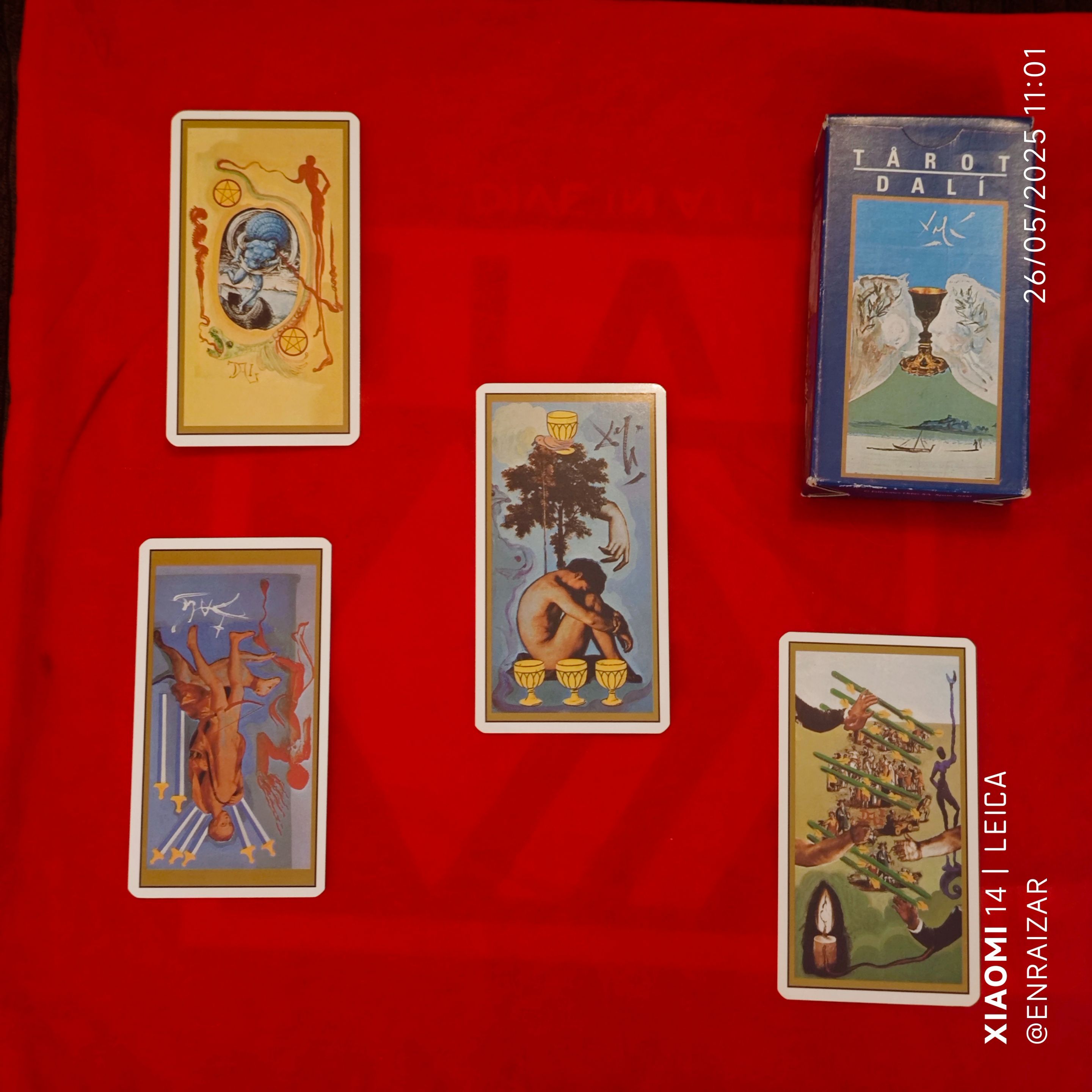
Two more recent examples of cards designed by great artists are the Dalí and Aleister Crowley decks.
The [Dalí deck](https://www.clarin.com/astrologia/tarot-salvador-dali-cartas-ideo-artista-reelaboracion-arcanos_0_G14W9d28Ys.html), created in the last years of his life together with esotericist Rachel Pollack, seems aesthetically flawed to me. I expected something more from Dalí.
Alesteir Crowley's deck, however, is aesthetically more than interesting to me. The author, [Frieda Harris](https://en.wikipedia.org/wiki/Lady_Frieda_Harris), under Alesteir's guidance, left behind one of the most interesting and beautiful Taots (in my opinion 😌).
For now, I will not refer to its divinatory use, although this publication is accompanied by a spread.
At the time, I consulted the spread with @manclar, to whom this publication is dedicated. Commenting on the spread, he told me that he paid close attention to the symbols that appeared on the cards, which leads me to another use of the cards.
---
>Dos ejemplos más recientes, sobre cartas elaboradas por grandes artistas son los mazos de Dalí y de Alesteir Crowley.
>El [mazo de Dalí](https://www.clarin.com/astrologia/tarot-salvador-dali-cartas-ideo-artista-reelaboracion-arcanos_0_G14W9d28Ys.html), elaborado en los últimos años de su vida junto a la esoterista Rachel Pollack, estéticamente me parece fallido. De Dalí, esperaba algo más.
>El de Alesteir Crowley sin embargo estéticamente me parece más que interesante. La autora, [Frieda Harris](https://en.wikipedia.org/wiki/Lady_Frieda_Harris), bajo la guía de Alesteir dejó uno de los Taots más interesantes y bellos (para mí 😌).
>Por ahora no haré referencia a su uso adivinatorio, aunque a esta publición le acompaña una tirada.
>En su día consulté la tirada con @manclar, al que va dedicada esta publicación. Cometando la tirada me dijo que se fijaba mucho en los símblos que aprecían en las cartas, lo que me lleva a otro uso de las cartas.
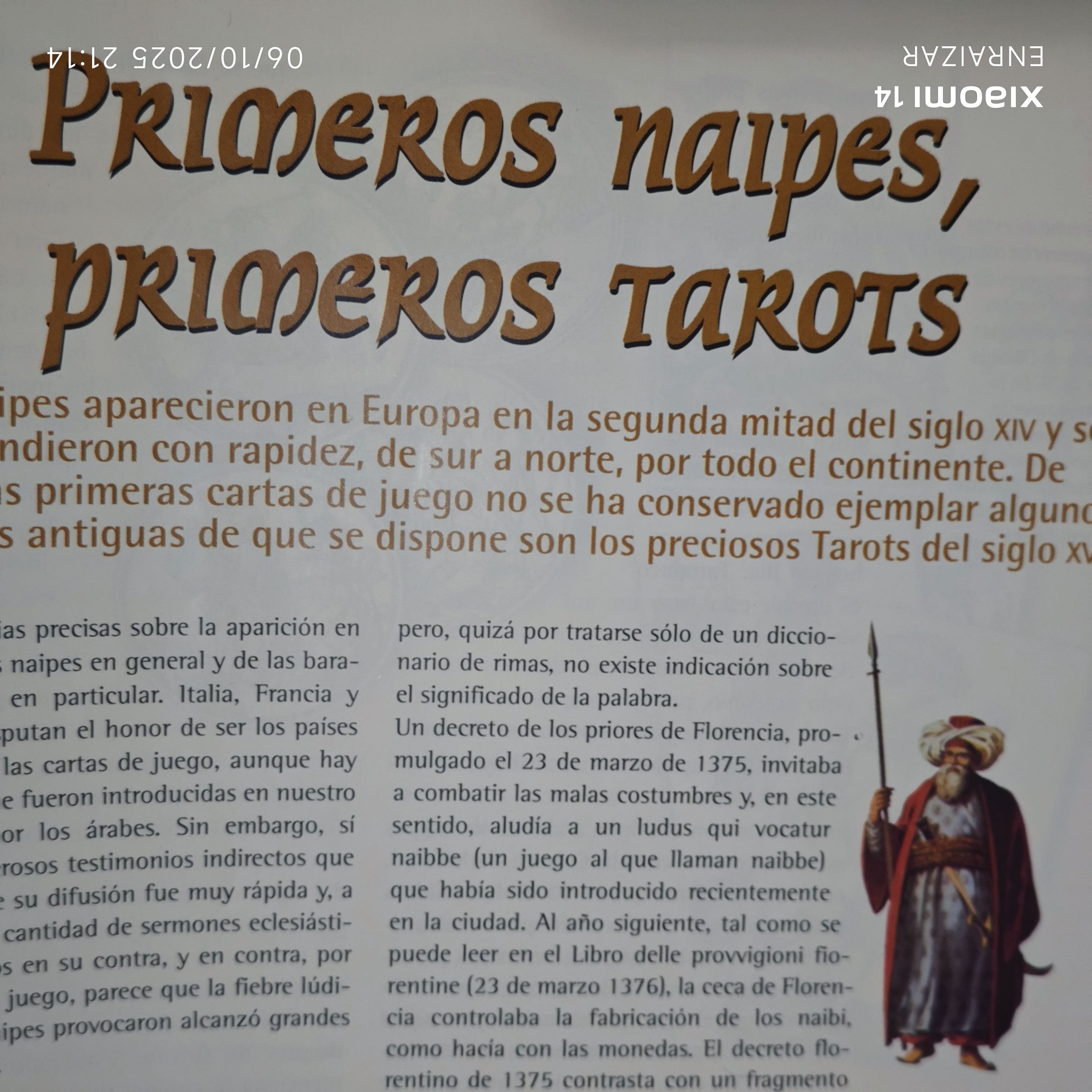
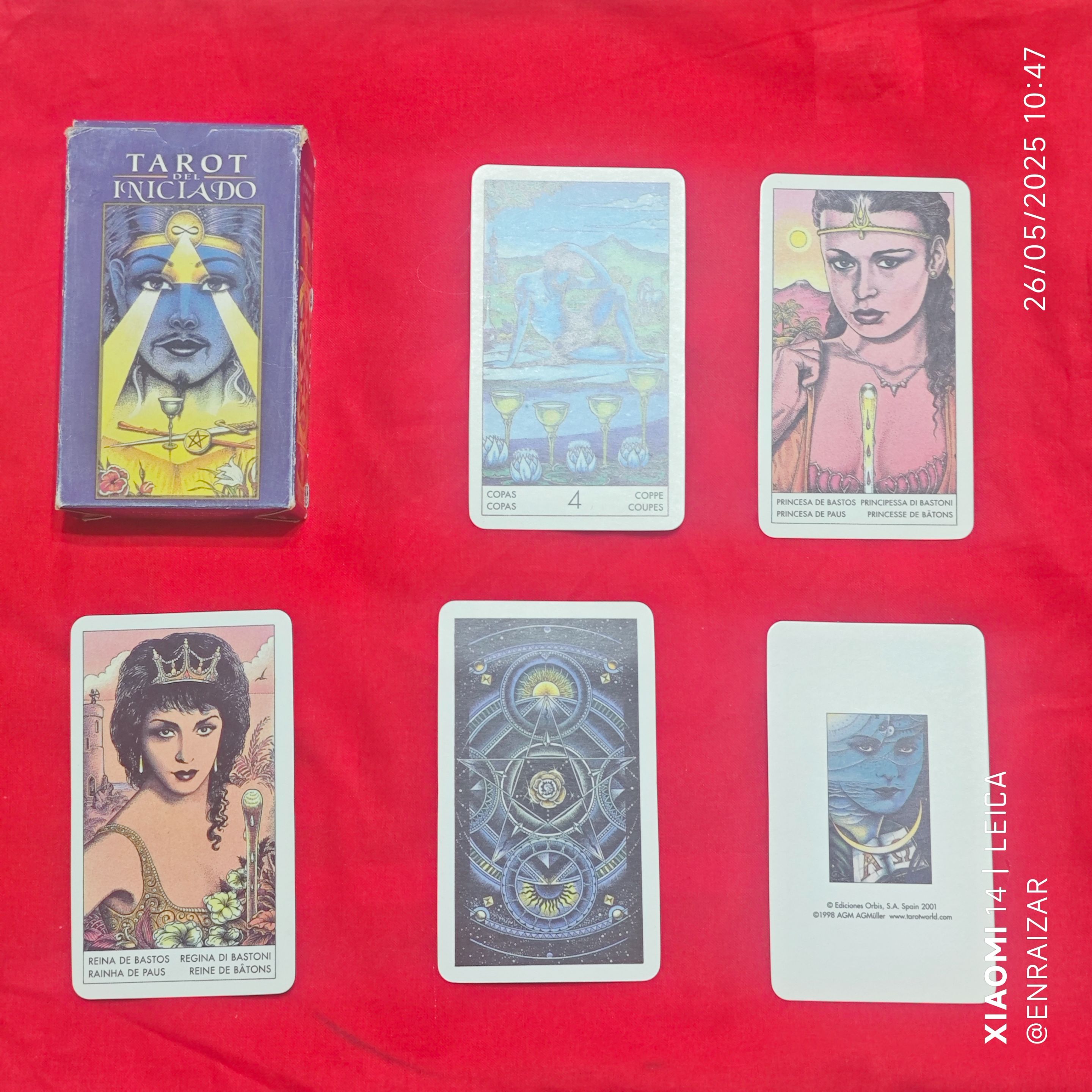
---
Many people believe that they live among inert objects and living beings, and I'm not saying they're wrong. But we really live among meanings, which brings me to Jung and cinema.
In [The Pale Rider](https://www.filmaffinity.com/es/film262525.html), after her dog is killed by the villains in the film, the girl Megan prays to God to send someone.
Clint Eastwood then appears in response to Megan's prayer. Clint Eastwood is much more than a priest or a gunslinger.
For Megan, he represents the archetype of the father; for the community, the archetype of the hero.
Clint Eastwood's presence will bring about a complete inner change in Megan. She will go from girl to woman, and the presence of the gunslinger will ignite in her a longing for the father she never had, for a strong and protective figure.
---
>Muchas personas creen que viven entre objetos inertes y seres vivos, no digo que no estén equivocados. Pero, realmente vivimos entre significados, lo que me lleva a Jung y al cine.
>En [El Jinete Pálido](https://www.filmaffinity.com/es/film262525.html), la niña Megan, después del asesinato de su perro por los malos de la película, mediante una oración le pide a Dios que envíe a alguien.
>Entonces aparece Clint Eastwood como respuesta a la plegaria de Megan. Clint Eastwood es mucho más que un sacerdote o un pistolero.
>Para Megan representa el arquetipo del padre, para la comunidad el arquetipo del héroe.
>En Megan la presencia de Clint Eastwood va a provocar todo un cambio interior. Pasará de niña a mujer, la presencia del pistolero encenderá en ella el anhelo del padre que no tuvo, de una figura fuerte y protectora.
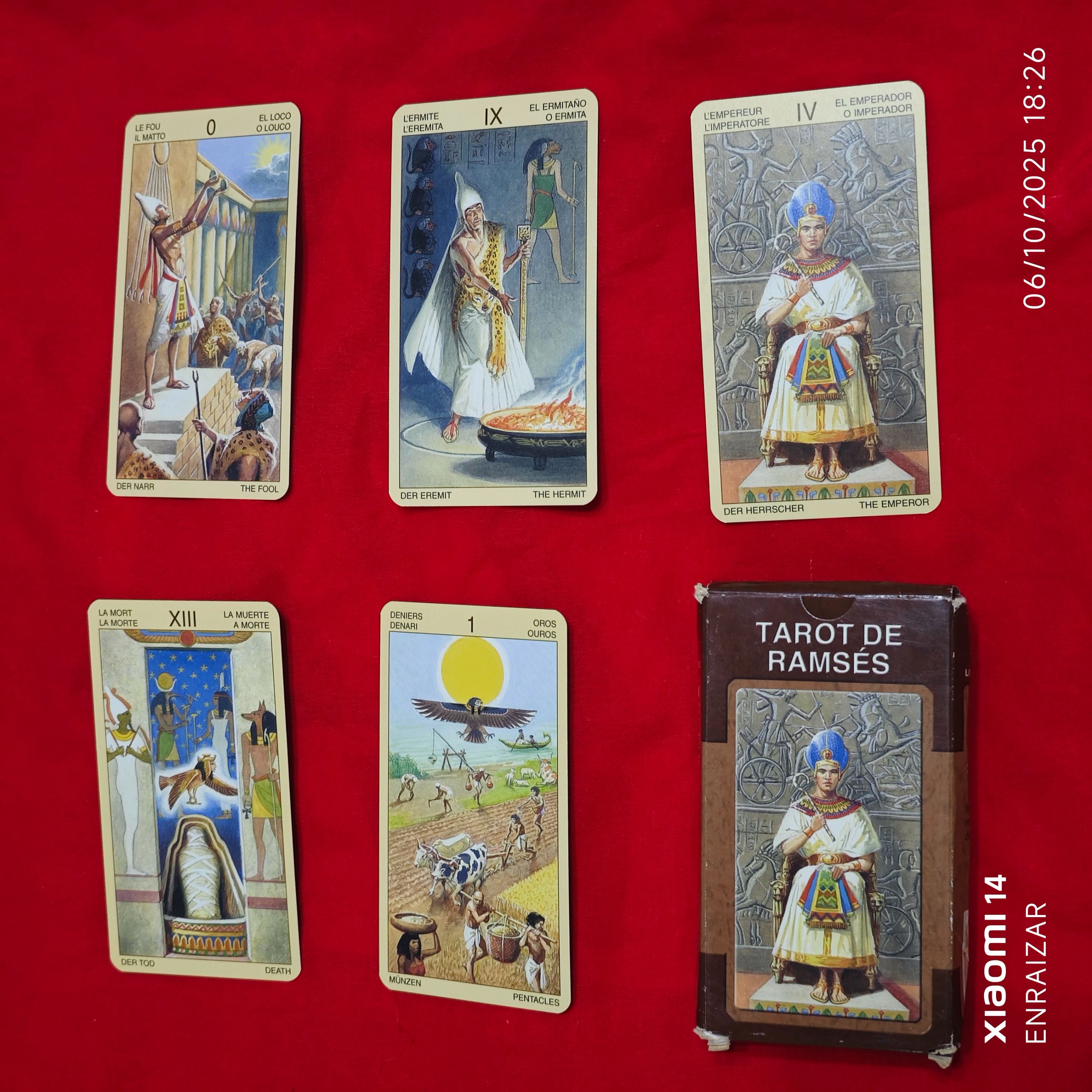
Finally, in a process of maturation (individuation), in which Megan “competes” with her mother for the gunman's love, she ends up accepting the departure of the protective figure. She is now a woman and therefore no longer needs a paternal or paternalistic figure.
It is the sudden appearance of the gunfighter (the flesh-and-blood symbol that refers to the father archetype) that will bring about this internal change in Megan. After her anger, jealousy, and longings become visible (conscious), Megan accepts the departure of the gunfighter (Clint Eastwood). She has matured and no longer needs the protection or guidance of a “great man” or a powerful mentor.
Once his mission is complete, Clint Eastwood disappears. From that moment on, Megan is responsible for her own life.
---
>Finalmente en un proceso de maduración (individuación), en el que Megan "competirá" con su madre por el amor del pistolero, terminará por aceptar la marcha de la figura protectora. Ya es una mujer y por tanto ya no necesitará de una figura paternal ni paternalista.
>Es la aparición repentina del pistolero (el símbolo de carne y hueso que remite al arquetipo del padre) lo que provocará este cambio interno en Megan. Después de que sus enfados, celos y anhelos se hacen visibles (conscientes), Megan acepta la marcha del pistolero (Clint Eastwood). Ha madurado y ya no necesita la protección ni guía de un "gran hombre" ni de un poderoso mentor.
>Finalizada su misión Clint Eastwood desaparece. Desde ese momento Megan es la responsable de su vida.

Therefore, in addition to their artistic dimension, Tarot symbols are a gateway to the shadow, to the unconscious. Which card do you like best? What symbol on that card catches your attention? Does that symbol evoke any feelings, emotions, or memories?
Finally, I return to the divinatory use. The spread you see has meaning for me. I asked the cards about a venture I am working on. The cards' answer, for me, was clear: in October and November of this year, the business would go through a major crisis and could even disappear. Manclar was more optimistic; he saw hope after the chaos.
In any case, I don't believe that anything is written in stone. If you want to contribute an alternative interpretation to the spread, feel free to do so in the comments.
---
>Por tanto, además de la dimensión artística, los símbolos del Tarot son una vía de acceso a la sombra, a lo inconsciente. ¿Qué carta te gusta más? De esa carta, ¿Qué símbolo te llama la atención? ¿Te provoca alguna sensación, emoción o recuerdo ese símbolo?
>Por último, retomo el uso adivinatorio. La tirada que ves tiene un significado para mí. Pregunté a las cartas sobre un emprendimiento en el que estoy trabajando. La respuesta de las cartas, para mí, fue clara, en octubre y noviembre de este año el negocio pasaría por una gran crisis, incluso podría desaparecer. Manclar fue más optimista, vio esperanza después del caos.
>En todo caso, no creo que nada esté escrito. Si quieres aportar alguna interpretación alternativa a la tirada eres libre de hacerlo en los comentarios.
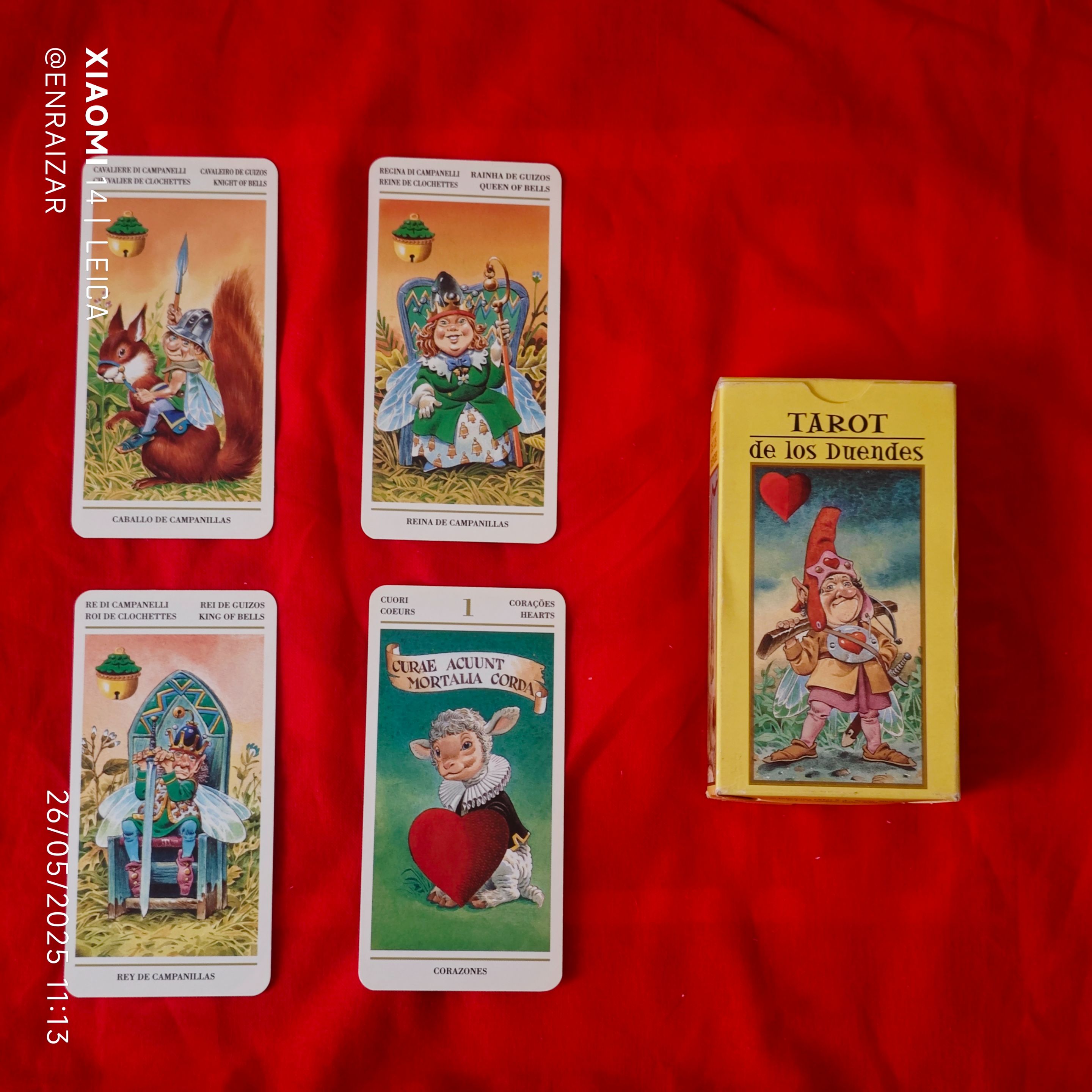
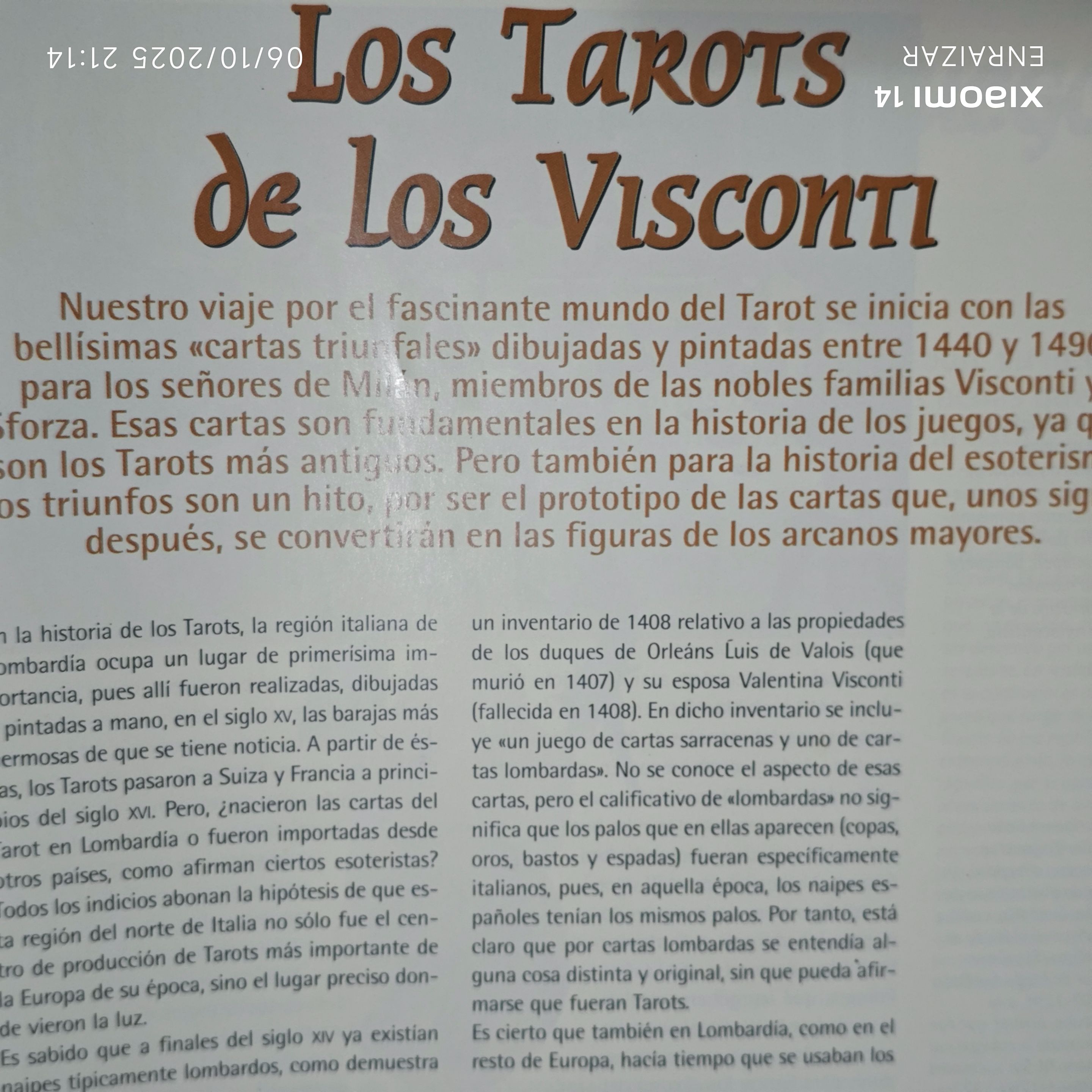

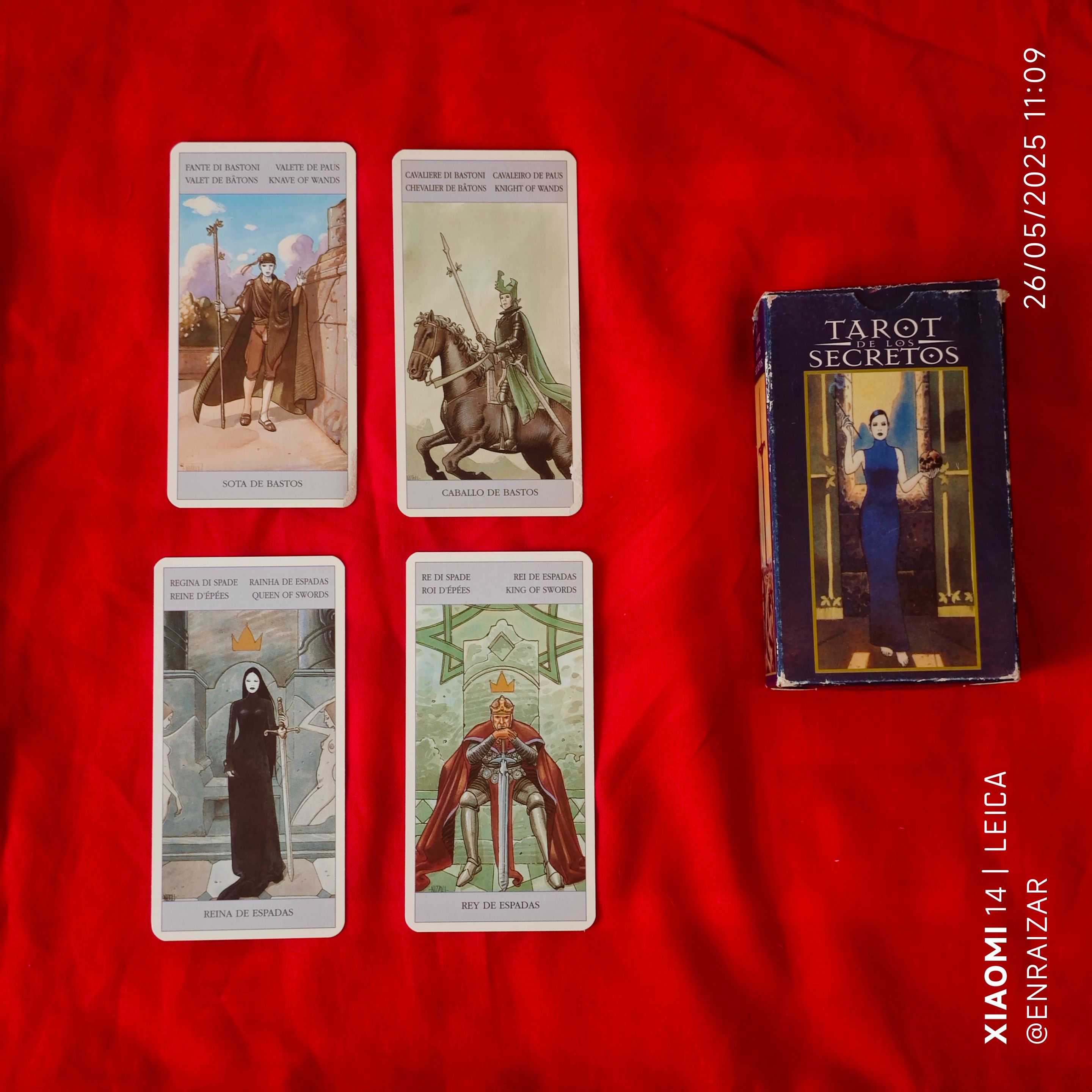


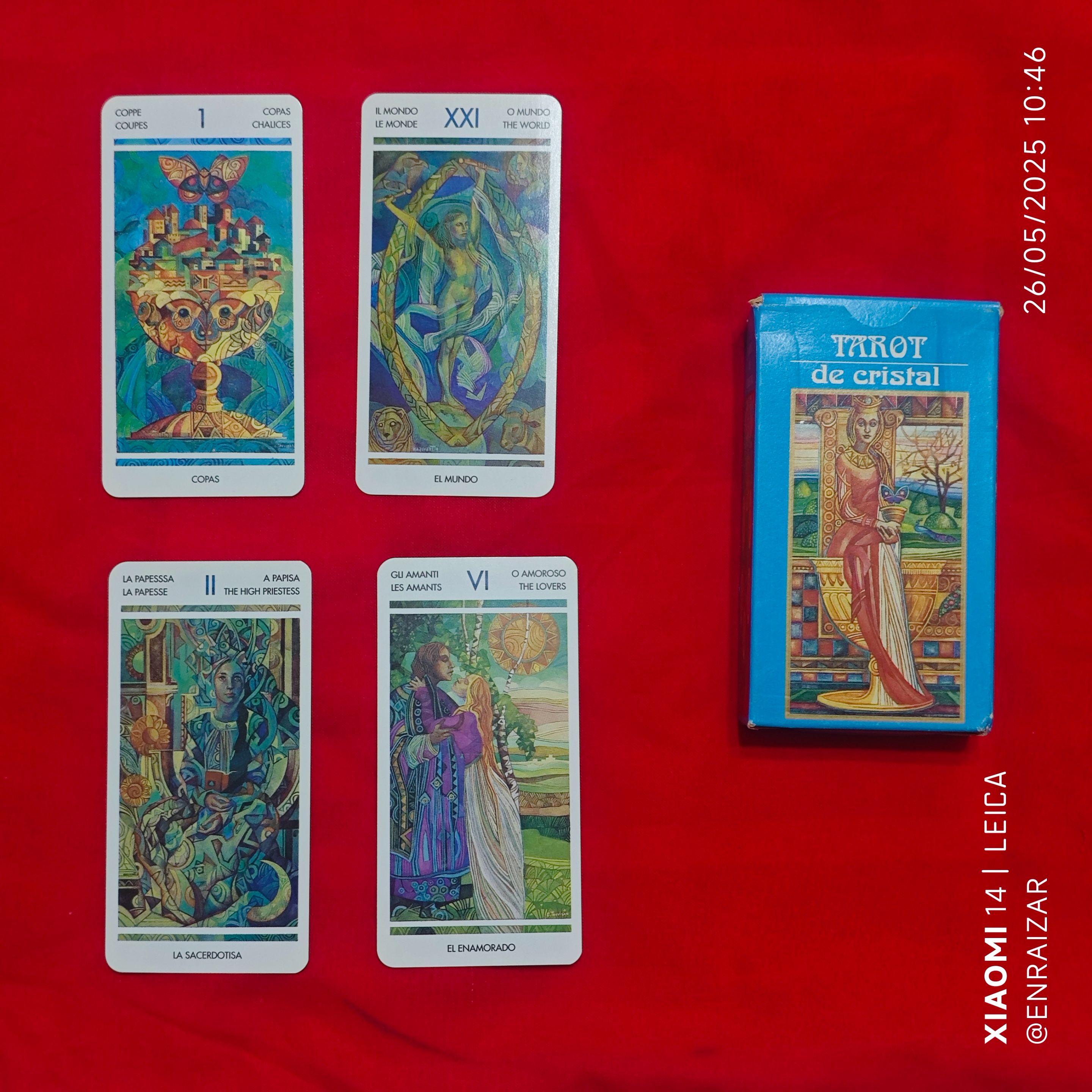
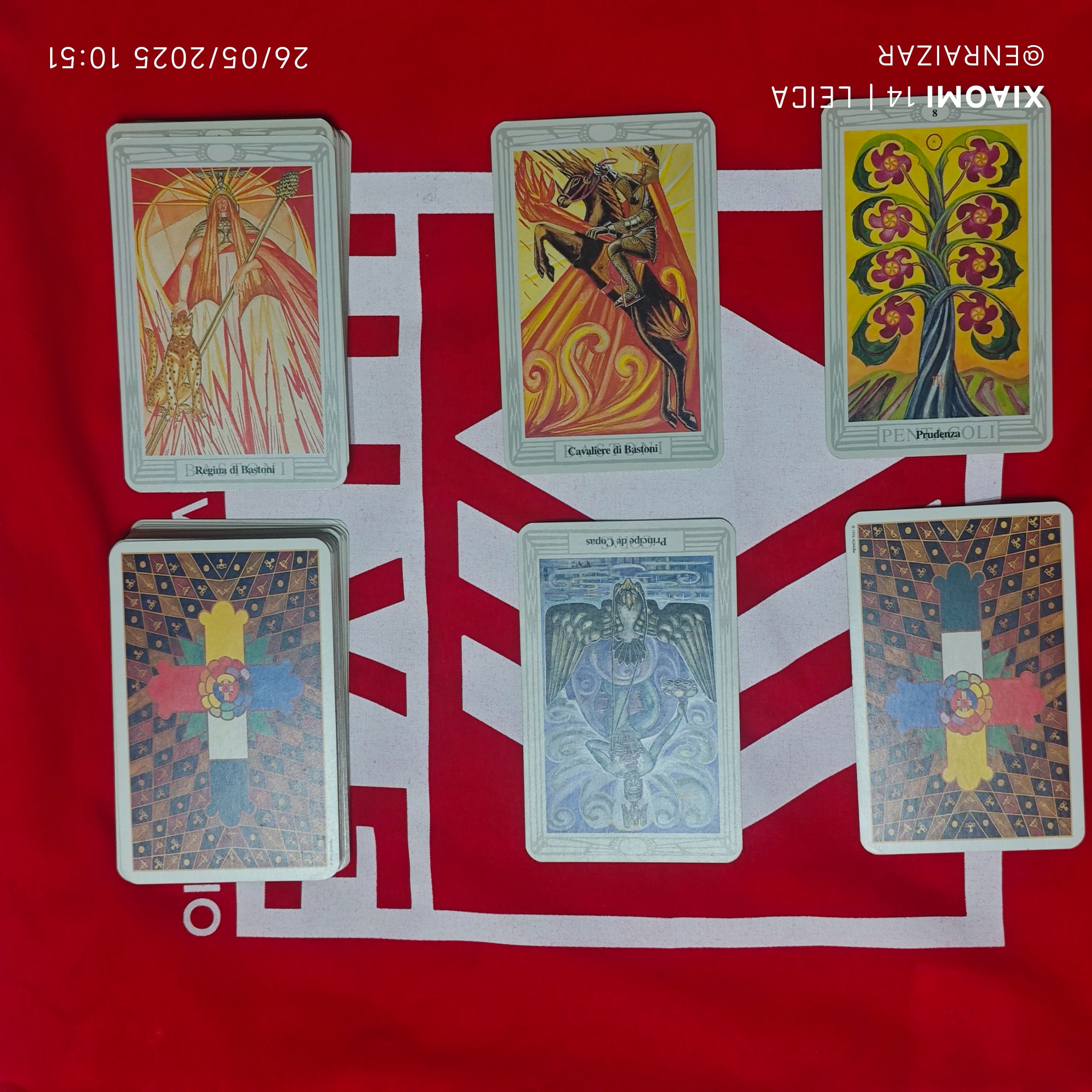
Tarot Crowley
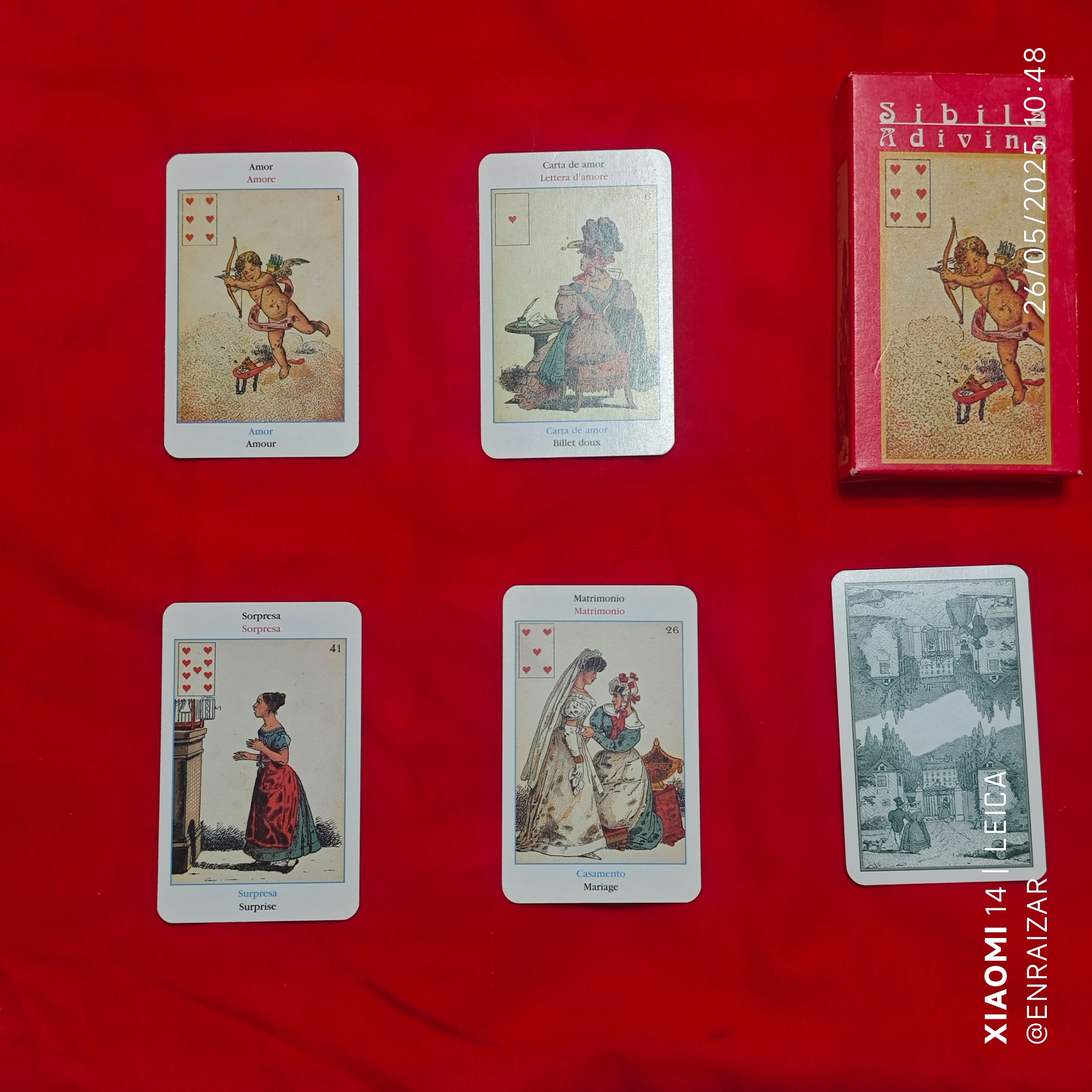
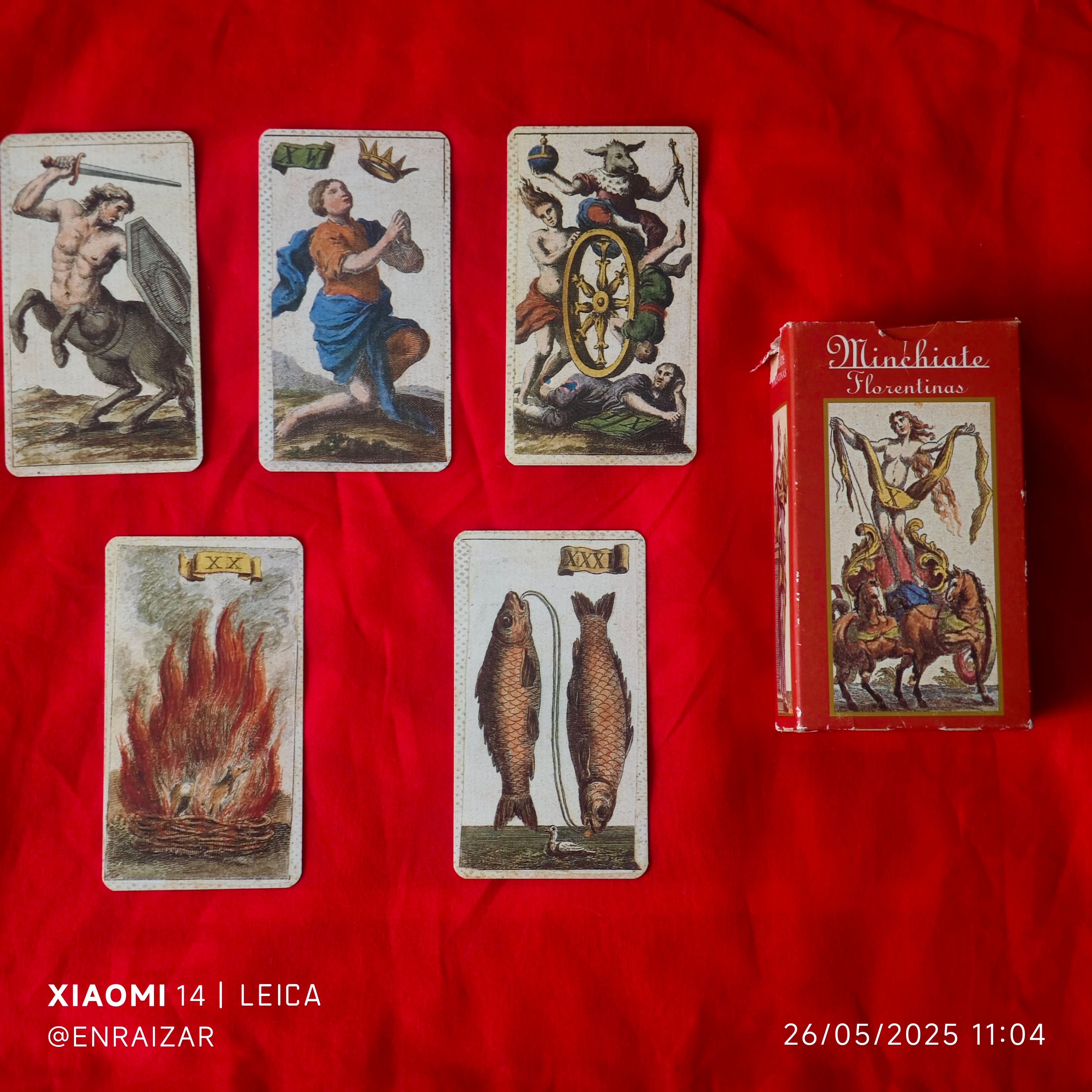

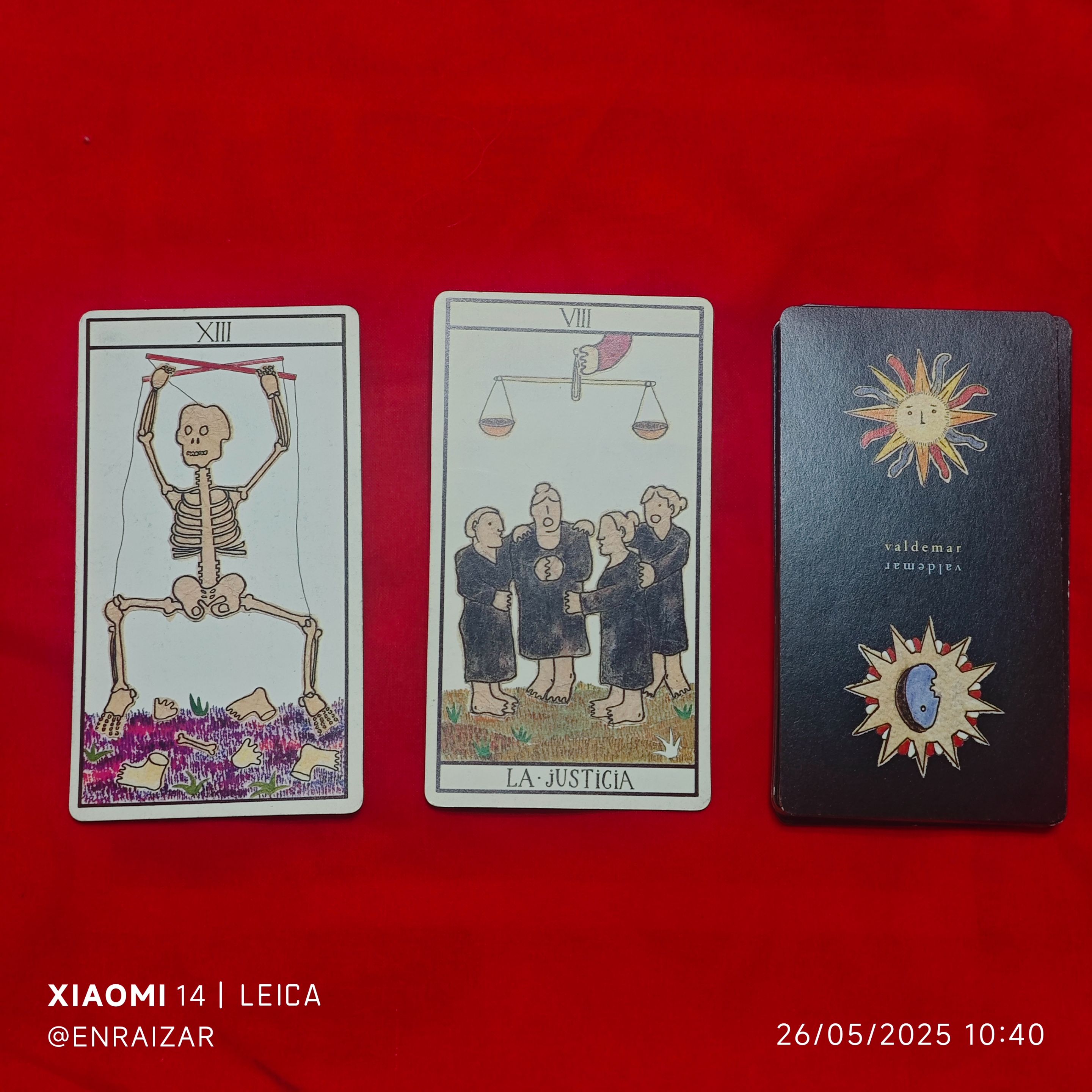
Tarot Leopoldo María Panero
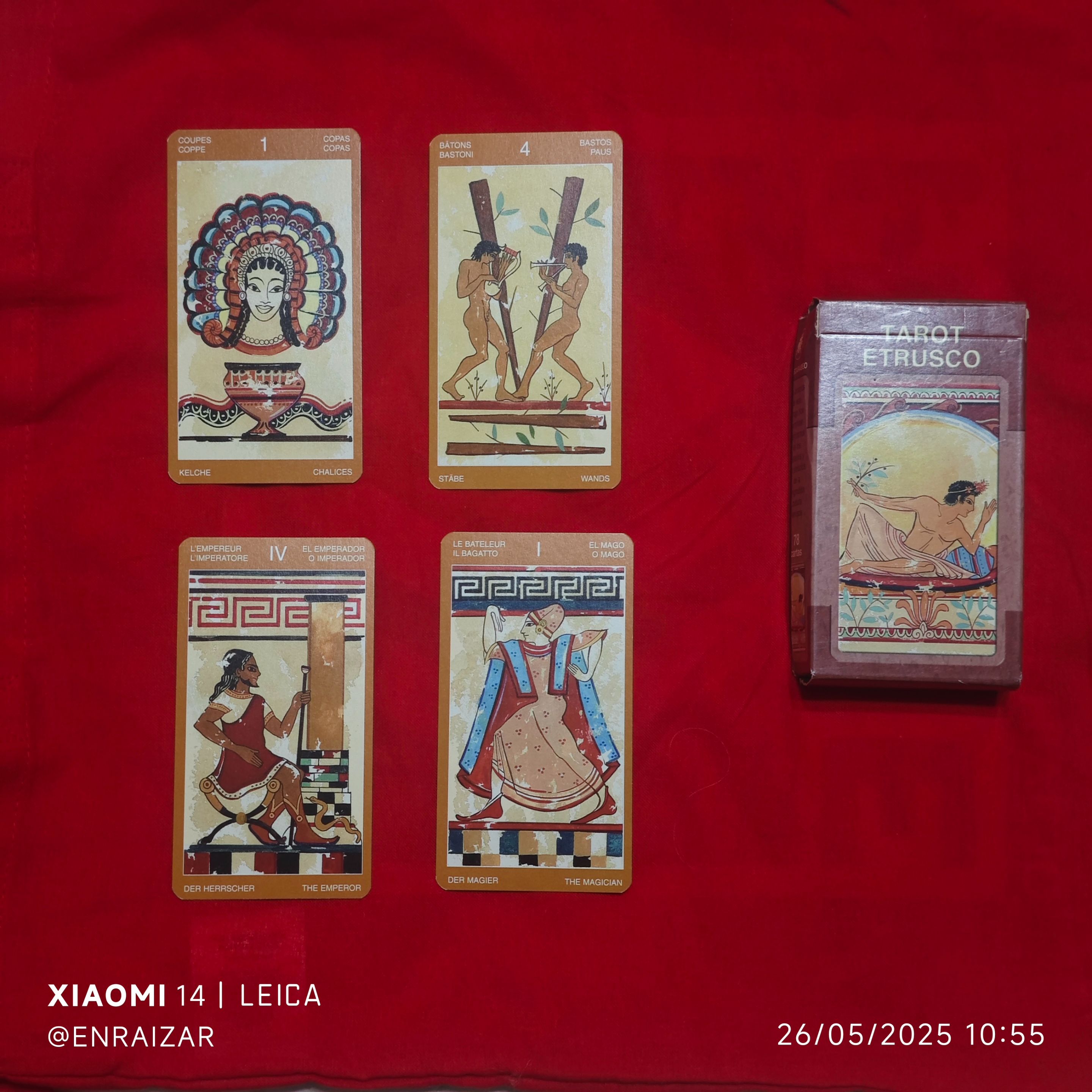

Tarot erótico
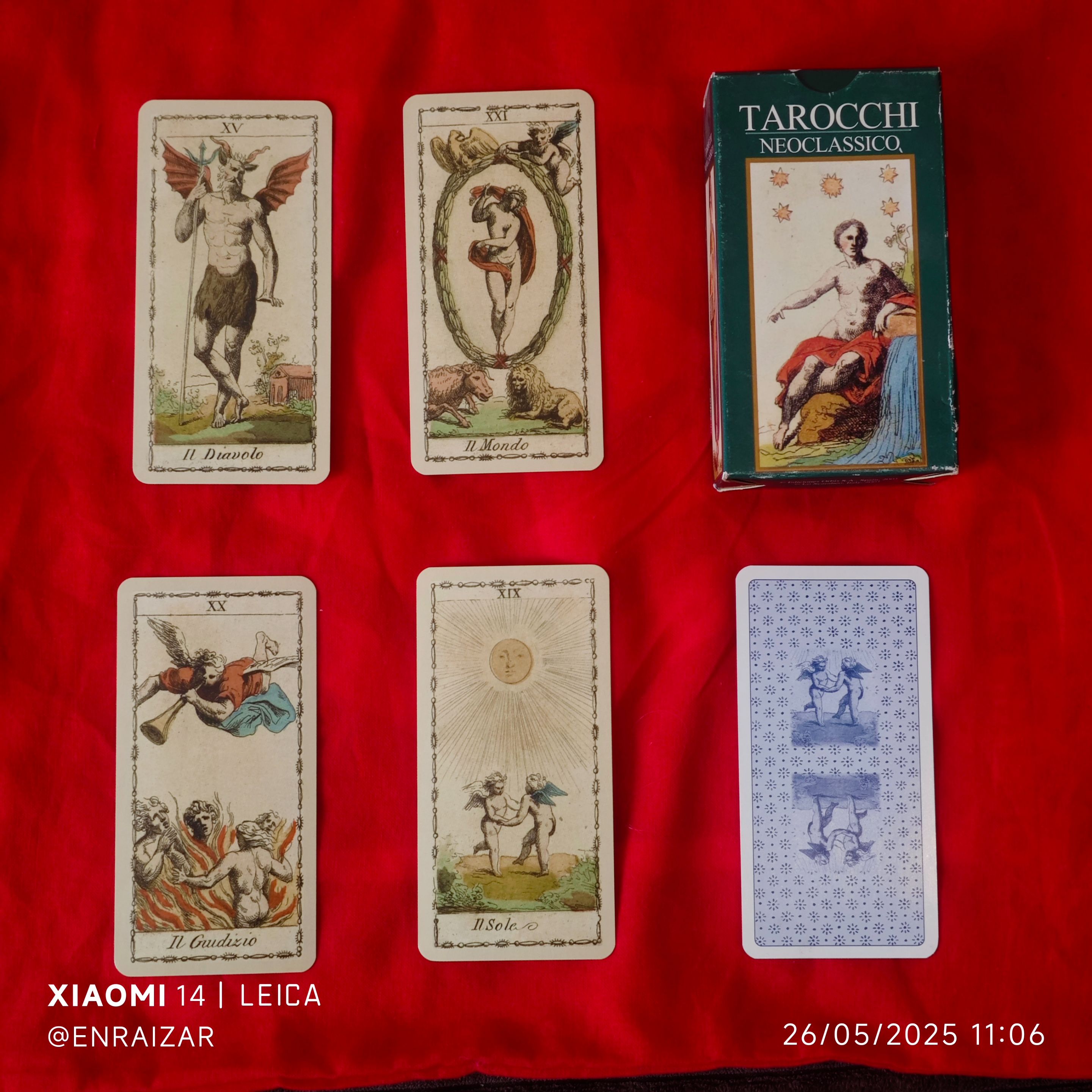



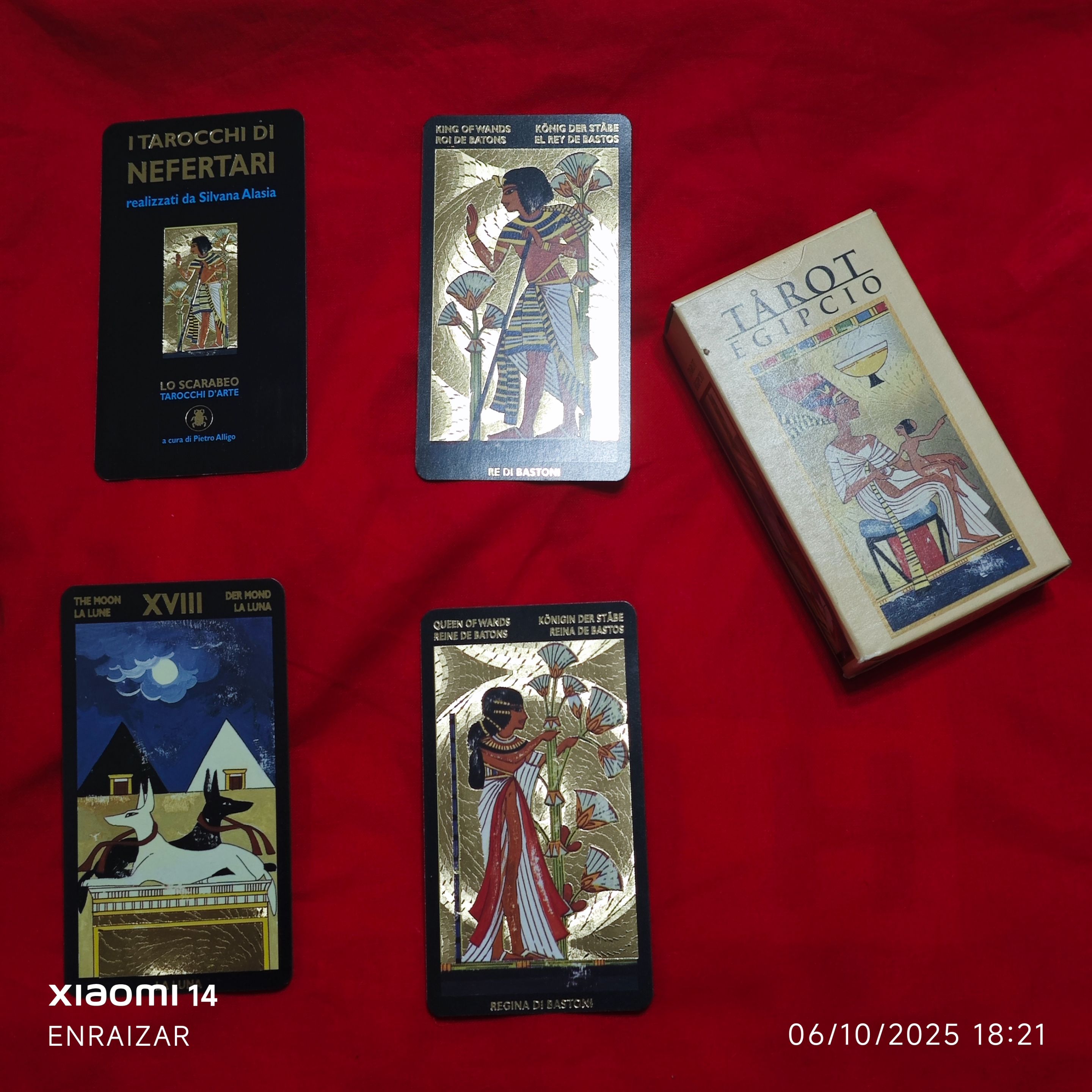
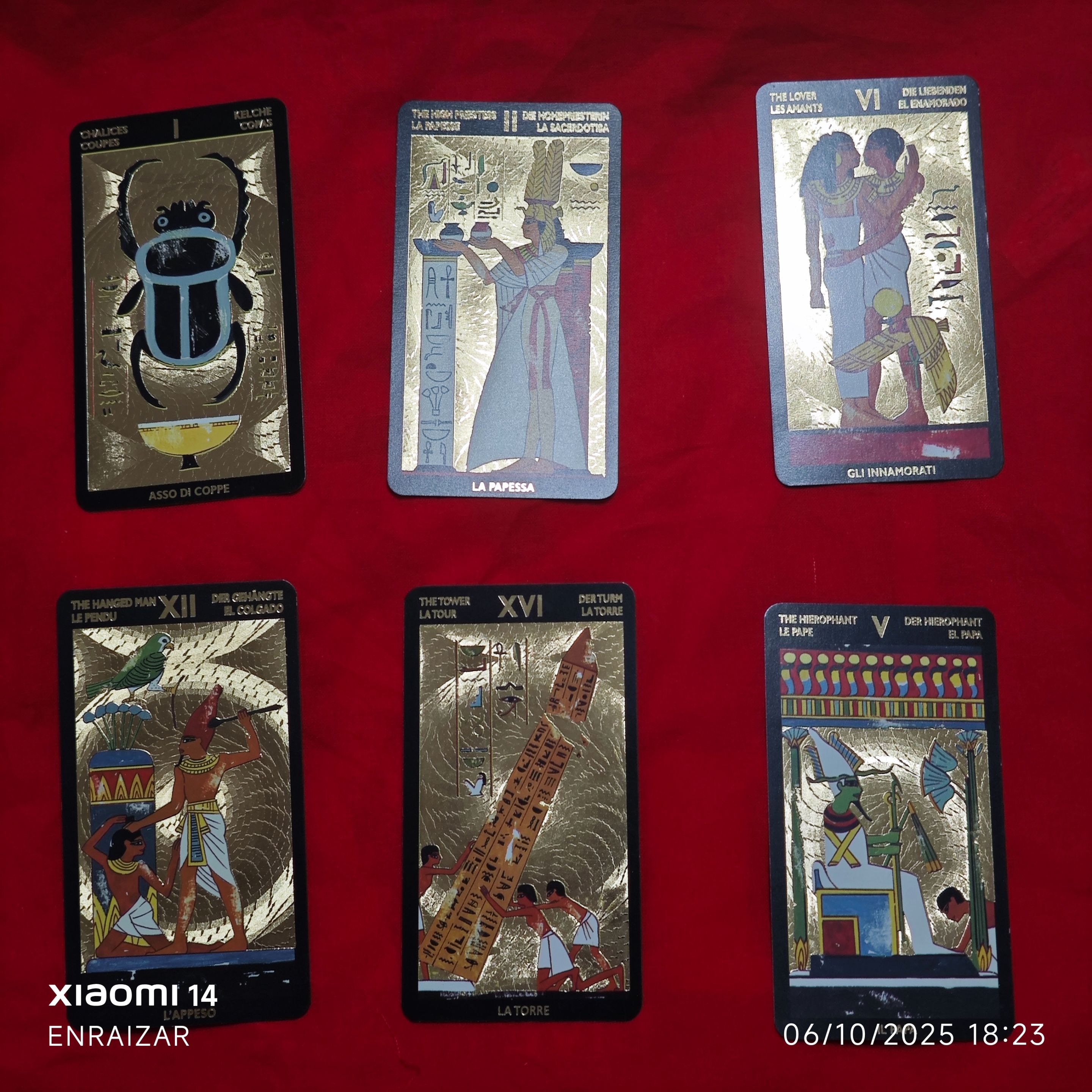
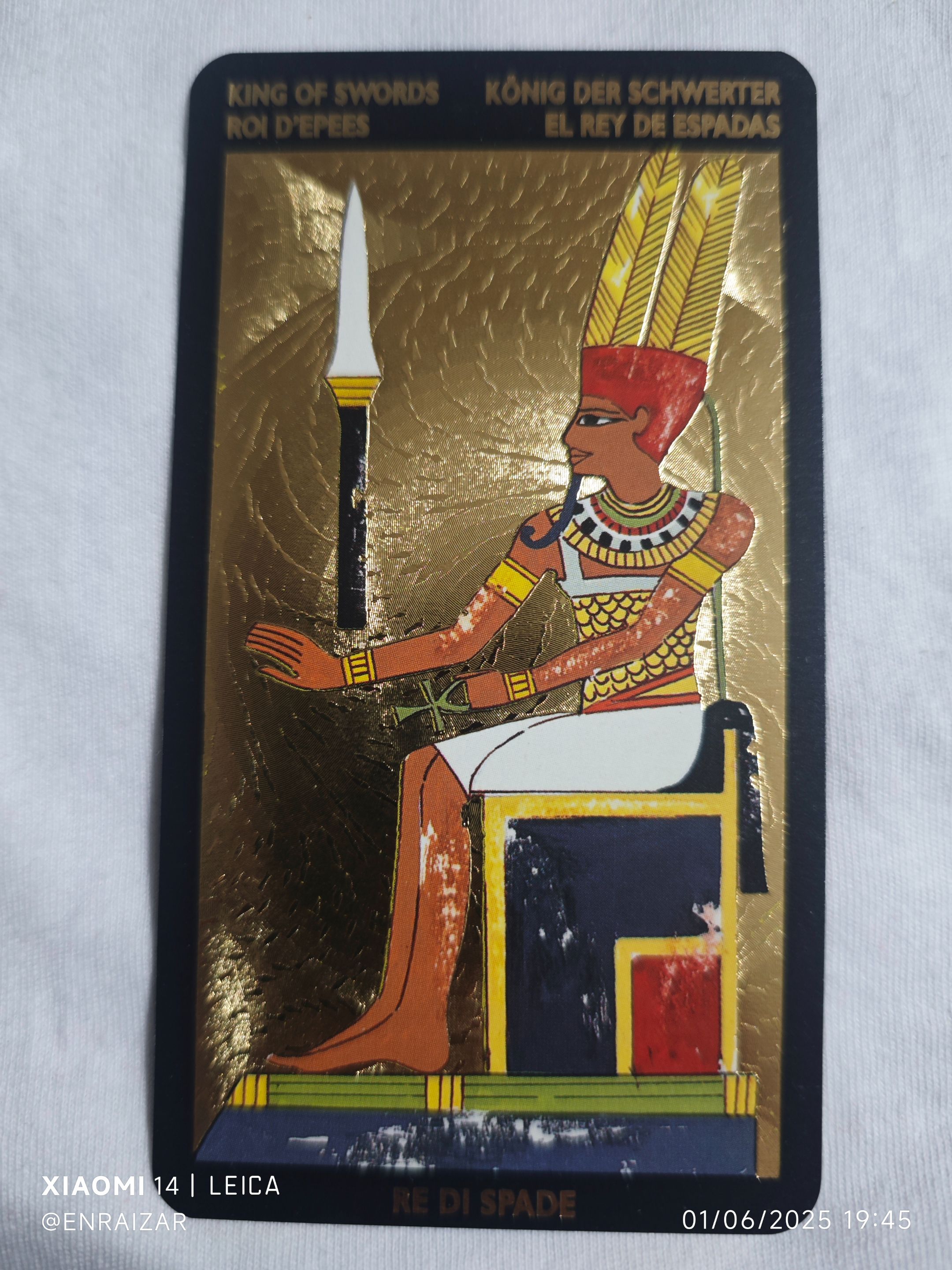 |
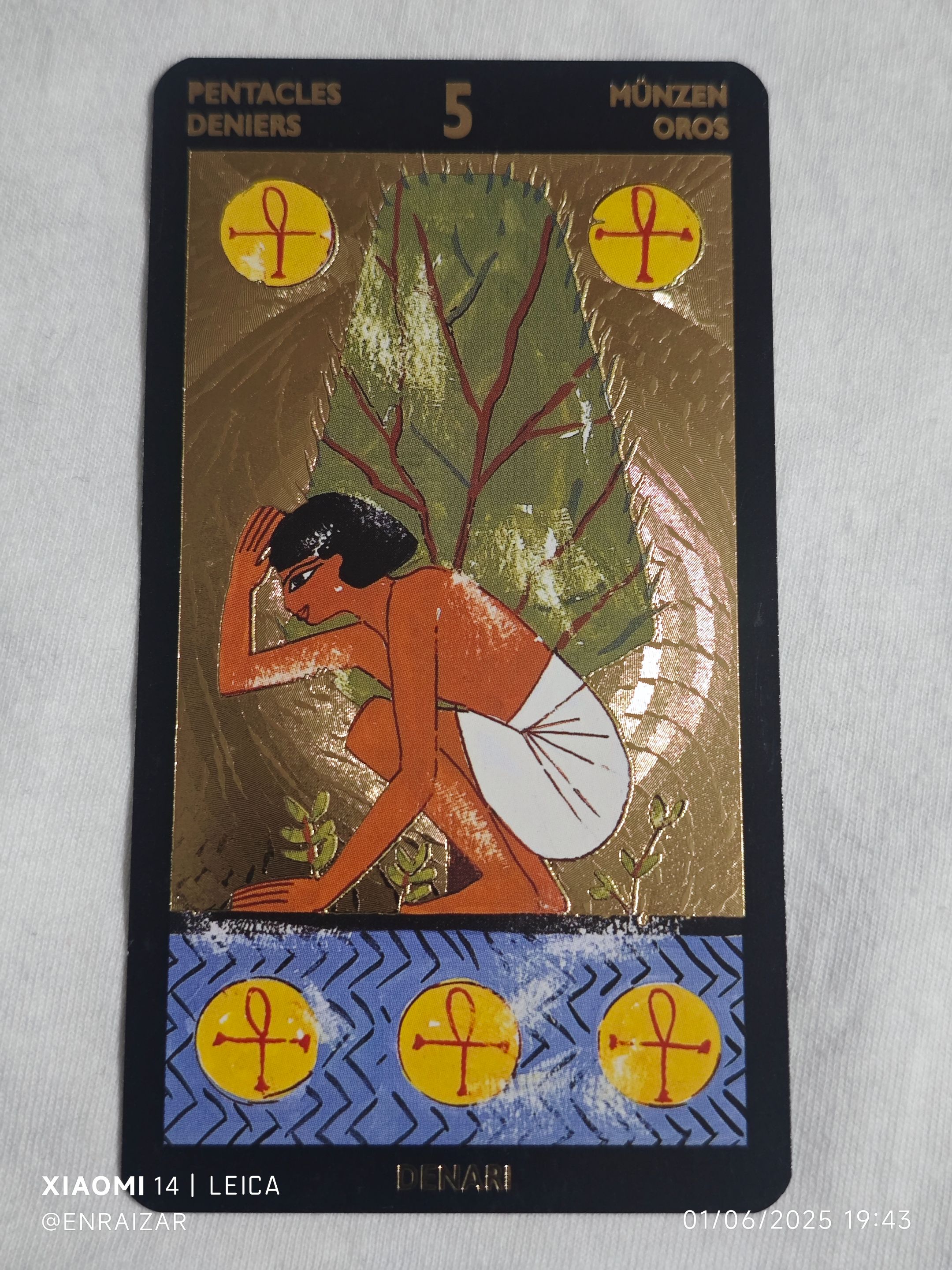 |
|---|---|
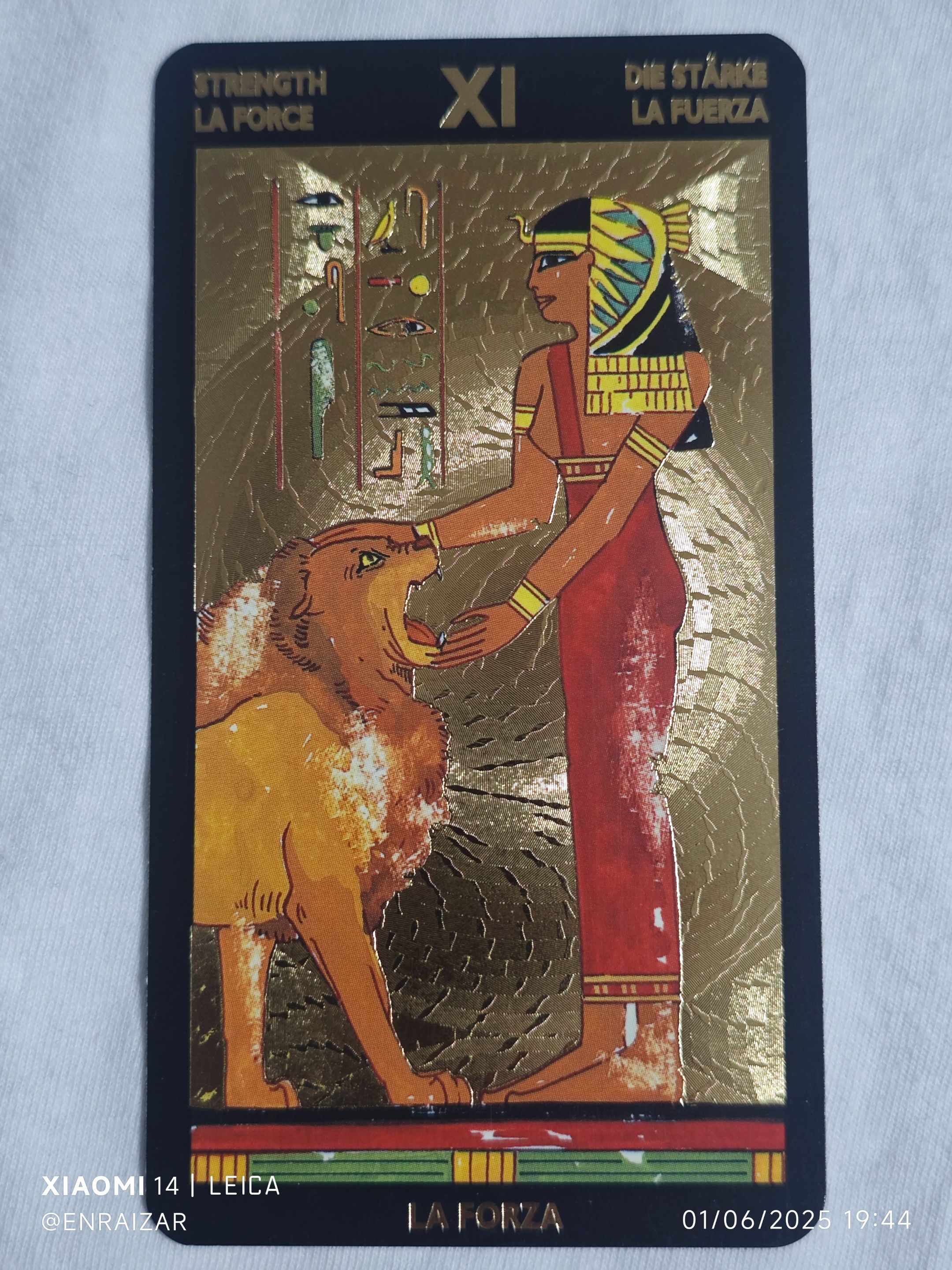 |
 |
|---|---|


